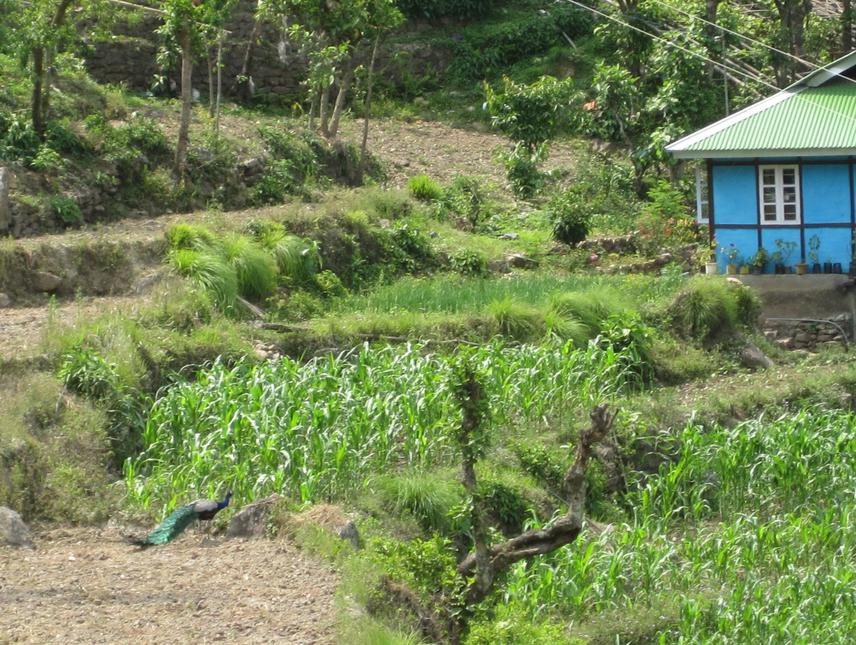Vikram Pradhan
The major focus of this project is to develop effective mitigation measures to tackle Human Wildlife Conflicts in Kitam Bird Sanctuary and Barsey Rhododendron Sanctuary of Sikkim.

Peacock foraging at a maize field in Lower Kitam village at Kitam Bird Sanctuary
Establishment of Protected areas and the resultant negative interaction between the animals and humans have altered the perception and tolerance of the communities living in the fringe villages. The increase in HWC has threatened to undermine the local support for conservation - making them hostile towards wildlife conservation initiatives and aggressive towards the staffs of protected areas. The lack of availability of scientific information regarding the damage and its control has resulted problems while developing strategies to mitigate HWC. Thus, the project attempts to assess the nature, extent and impact of HWC with intense data collection through participatory approaches in order to devise better, practical, rational and sustainable strategies for HWC management.
The communities are not able to access measures to manage HWC, which involve high investments, considering their socio-economic status. Thus, we aim to encourage and explore new and effective mitigation measures, which can be tested on a pilot basis. Depending on its effectiveness, these measures can be implemented in larger scale.
The project also aims to contribute in changing the negative perception and tolerance of the affected communities toward the problem animals and conservation as a whole through awareness generation and education on non-tangible benefits of wildlife. Moreover, the project intends to disseminate socially acceptable innovative techniques HWC mitigation. This may also result in the change in perception among the community which would contribute to reduce risks, improve their livelihood and reduce their vulnerability.
Overall, the project aims to inform policy-making and managing Human Wildlife Conflict with local stake holders and the forest department.